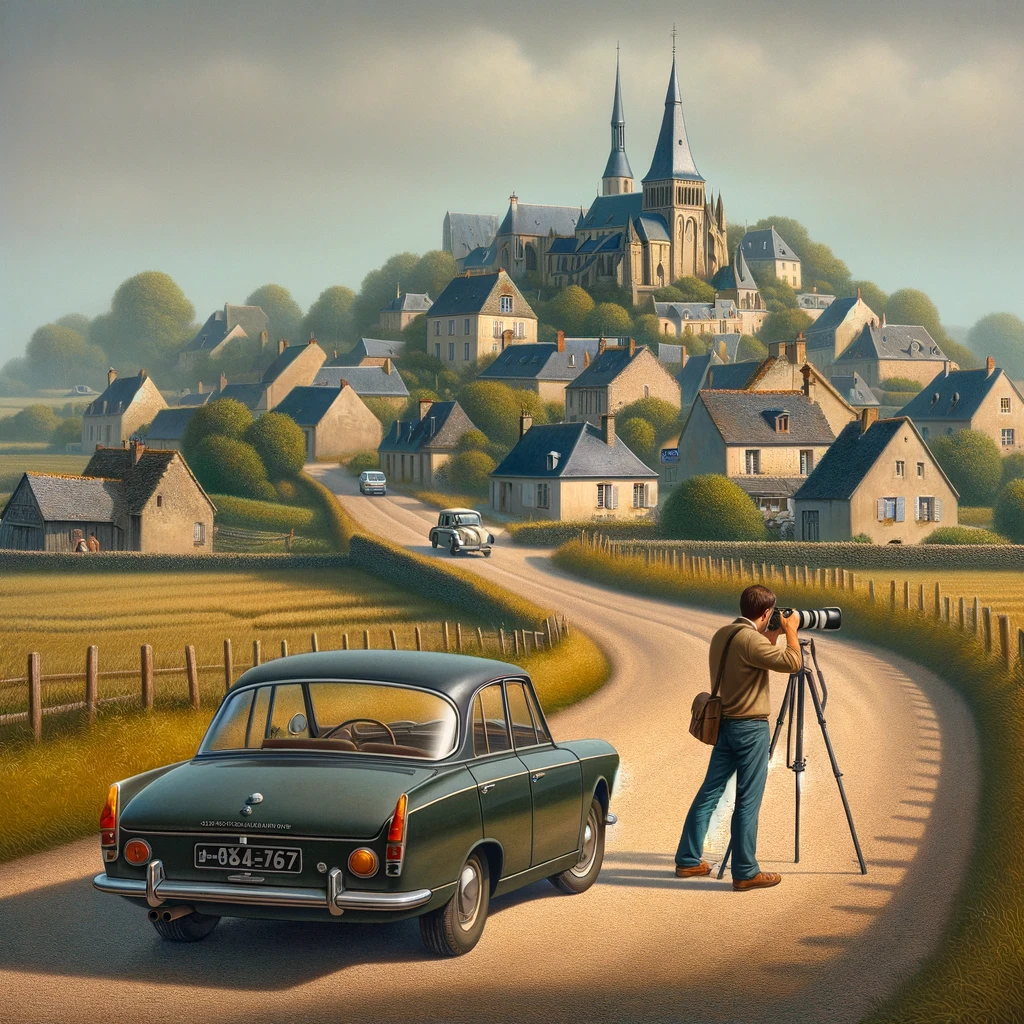A visual sociologist embarking on a short road trip through France would approach this journey with a keen eye for the social landscapes, cultural expressions, and the intricate ways in which people interact with their environment. This academic field utilises visual methods to understand societal norms, values, and structures. Here’s how a visual sociologist might approach such a trip:
Pre-Trip Preparation
- Research and Planning: Before setting out, the sociologist would research France’s diverse regions, focusing on their unique cultural, historical, and social contexts. This preparation allows for a more informed and focused approach to capturing visual data that reflects societal structures and norms.
- Objective Setting: They would define clear objectives for the trip, identifying key themes or social phenomena they wish to explore, such as urban versus rural lifestyles, the impact of tourism, regional culinary traditions as expressions of cultural identity, or the manifestation of France’s colonial history in its urban architecture.
During the Trip
- Photographic Documentation: Armed with a camera, the sociologist would document their observations through photographs, focusing on subjects like public spaces, interactions among people, architectural styles, and any visual markers of social inequalities or cultural integration. This visual data serves as a primary material for analysis.
- Participatory Observations: Beyond passive observation, they might engage with locals to gain deeper insights into the social fabric of the communities visited. This could involve informal interviews or participating in local events, always with respect for ethical considerations and the subjects’ consent.
- Visual Ethnography: The sociologist could employ visual ethnography techniques, capturing video footage to record the dynamism of social life in different French locales. This method allows for a richer, more nuanced portrayal of social interactions and cultural practices.
- Comparative Analysis: By visiting a variety of locations, from bustling cities like Paris to quiet rural villages in Provence, the sociologist can compare and contrast different social environments, examining how geography, economy, and history shape societal norms and individual behaviours.
Post-Trip Analysis
- Cataloguing and Analysis: After the trip, the sociologist would catalogue the visual data, analysing it within the broader context of French society and the specific themes of interest. This could involve coding visual themes, identifying patterns, and drawing connections between visual data and sociological theories.
- Presentation and Dissemination: The findings could then be presented in academic papers, lectures, or exhibitions, translating visual observations into sociological insights. They might also explore the role of visual culture in shaping and reflecting French identity, societal changes, or persistent social issues.
- Ethical Reflection: Throughout the process, the sociologist would remain mindful of ethical considerations, ensuring that the representation of individuals and communities respects their dignity and privacy, and reflects a conscious effort to avoid stereotyping or misrepresentation.
So, a visual sociologist’s road trip through France would be a meticulously planned, deeply immersive journey aimed at uncovering the visual examples of social life, cultural expressions, and societal structures, all the while navigating the ethical landscape of visual research.
What would the difference be between a visual sociologist’s images from such a road trip and a general tourist’s?
The difference between a visual sociologist’s images from a road trip through France and those of a general tourist lies primarily in the intention behind the photographs, the subjects chosen, and the depth of narrative these images aim to convey.
Intention and Purpose
- Visual Sociologist: The images captured by a visual sociologist serve as a tool for social research. Their primary intention is to document and analyse aspects of social life, cultural practices, societal norms, and interactions. Each photograph is taken with a specific research question or theme in mind, such as examining social stratification, community life, or the intersection of modernity and tradition. The focus is on uncovering and interpreting the underlying social dynamics.
- General Tourist: A tourist’s photographs are primarily personal mementos, capturing moments of leisure and interest during their travels. The intention is often to preserve memories of beautiful landscapes, famous landmarks, or personal experiences. While these images can reflect cultural and social elements, their primary aim is not to analyse or document social phenomena.
Subjects and Focus
- Visual Sociologist: The subjects of a visual sociologist’s photographs are carefully selected to illustrate specific sociological concepts or phenomena. This might include images of people in their everyday environments, architectural styles that reflect historical influences, or visual signs of cultural integration or conflict. The sociologist seeks out images that tell a story about the society’s structure, values, and challenges.
- General Tourist: Tourists often focus on subjects that are visually appealing or personally significant. This usually includes landmarks, scenic views, and experiences that are emblematic of the destination. While these subjects can sometimes coincide with those of interest to a visual sociologist, the tourist’s selection is more driven by aesthetic appeal or personal interest than by sociological analysis.
Depth of Narrative
- Visual Sociologist: The narrative depth of a visual sociologist’s images is significant. Each image is part of a larger story about the society in question, and the sociologist can often provide a detailed context for each photograph, explaining its relevance to broader social patterns or issues. The images are intended to provoke thought, raise questions, or illustrate complex social relationships.
- General Tourist: While tourist images can have personal stories behind them and occasionally capture insightful moments, they generally lack the broader sociological narrative. The depth is more about personal experience and the aesthetic or emotional impact of the scene, rather than an exploration of social structures or issues.
In summary, while both a visual sociologist and a general tourist might capture images of the same country, the sociologist’s images are deeply entwined with academic inquiry and aim to provide insights into societal structures, norms, and dynamics. In contrast, a tourist’s photos are personal, focusing on beauty, landmarks, and experiences, with less emphasis on societal analysis.

